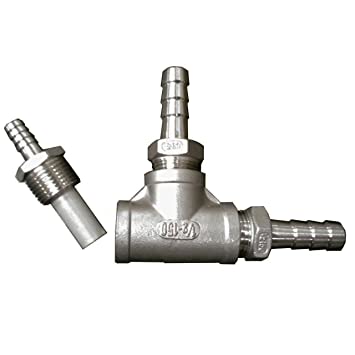In the quest to improve my beers, I've started doing my lagers in a keg king kegmenter which gives me near 100% sealed pressure ferment system! which I then transfer under pressure through my purged filter and into my purged kegs.
Now, this gives me a minimal risk of oxidation, I've never had much of an issue with oxidation but in the past my real hoppy pale and IPAs have aromas faded away fast in the keg, even after purging with co2.
I used standard fermenters this way, but as I only just started using the kegmenter , I've only used lagers. Like helles and other malt foward beers like octoberfest, Doppelbocks etc.
My first hoppy beer in my kegmenter will be this week a sort of India pale lager, as my kegmenter as a nice cake of s189 in it. I'll be keen to see the less risk of oxidation on this beer.
But, one flaw I've can't get rid of, is when you purge your cornies, it will take sooo much co2 to actually get all the o2 out, as the blanket effect everyone thinks will happen doesn't happen, the co2 just mixes up and blends into the kegs environment, yes the level will drop, but apparantly I read on a brew mag pro brewers in the US have measured it and the level stays surprisingly high even after several well purged gulps of co2. This also increases the risk of oxidation If you rock n roll the keg as you are then dissolving the o2 into the beer.
Now this is not really an issue with say a standard beer that will be consumed in weeks, but a big hop foward IPA , IPL, etc it may loose some quality.
One method some of the pro brewers do over there and prob here is fill the receiving tank/keg with water, push water out with the co2, this then ensures near total displacement of o2 with a co2 environment.
Apparantly this uses less co2 than some big keg purge flushes, and is so much better in ensuring an o2 free vessel.
Prob been abit anal here, but I'm doing everything else right so might as well try this method on mainly my big hoppy beers.
I'll fill my receiving cornies with water, co2 the water out at low pressure say 6 psi, when empty, pressure fill from my kegmenter which I have been doing. That way basically nill o2
Thoughts guys........
Now, this gives me a minimal risk of oxidation, I've never had much of an issue with oxidation but in the past my real hoppy pale and IPAs have aromas faded away fast in the keg, even after purging with co2.
I used standard fermenters this way, but as I only just started using the kegmenter , I've only used lagers. Like helles and other malt foward beers like octoberfest, Doppelbocks etc.
My first hoppy beer in my kegmenter will be this week a sort of India pale lager, as my kegmenter as a nice cake of s189 in it. I'll be keen to see the less risk of oxidation on this beer.
But, one flaw I've can't get rid of, is when you purge your cornies, it will take sooo much co2 to actually get all the o2 out, as the blanket effect everyone thinks will happen doesn't happen, the co2 just mixes up and blends into the kegs environment, yes the level will drop, but apparantly I read on a brew mag pro brewers in the US have measured it and the level stays surprisingly high even after several well purged gulps of co2. This also increases the risk of oxidation If you rock n roll the keg as you are then dissolving the o2 into the beer.
Now this is not really an issue with say a standard beer that will be consumed in weeks, but a big hop foward IPA , IPL, etc it may loose some quality.
One method some of the pro brewers do over there and prob here is fill the receiving tank/keg with water, push water out with the co2, this then ensures near total displacement of o2 with a co2 environment.
Apparantly this uses less co2 than some big keg purge flushes, and is so much better in ensuring an o2 free vessel.
Prob been abit anal here, but I'm doing everything else right so might as well try this method on mainly my big hoppy beers.
I'll fill my receiving cornies with water, co2 the water out at low pressure say 6 psi, when empty, pressure fill from my kegmenter which I have been doing. That way basically nill o2
Thoughts guys........






